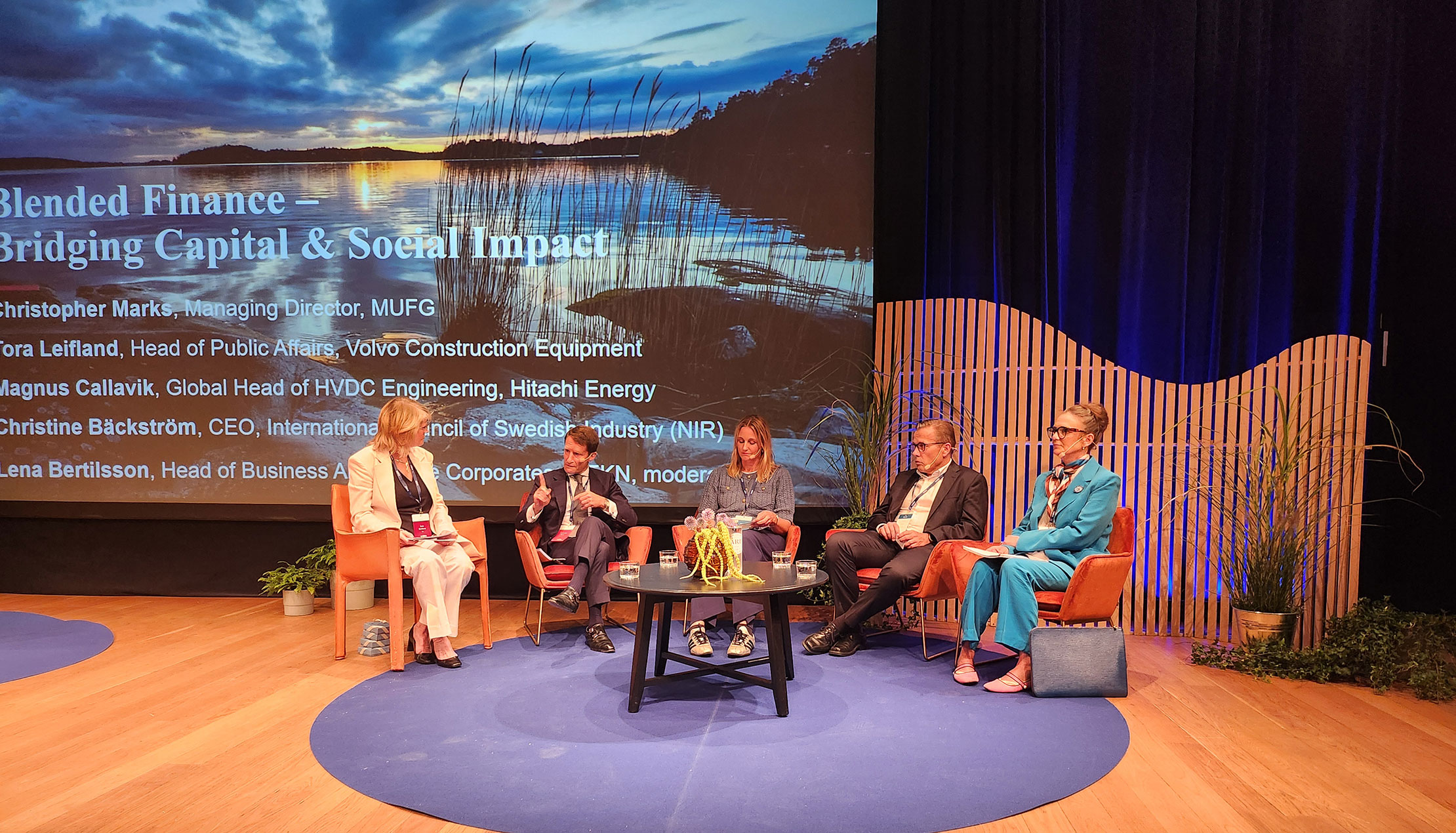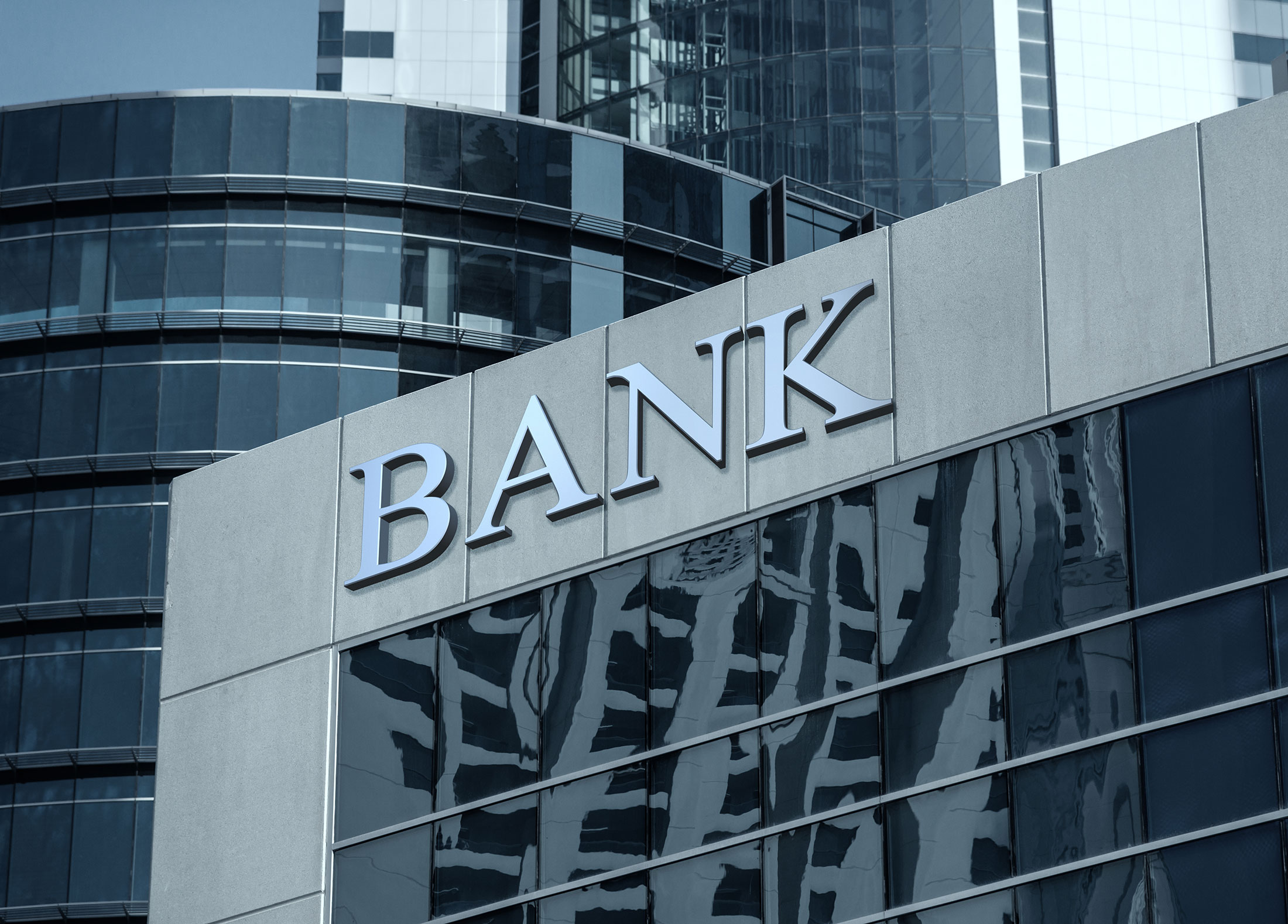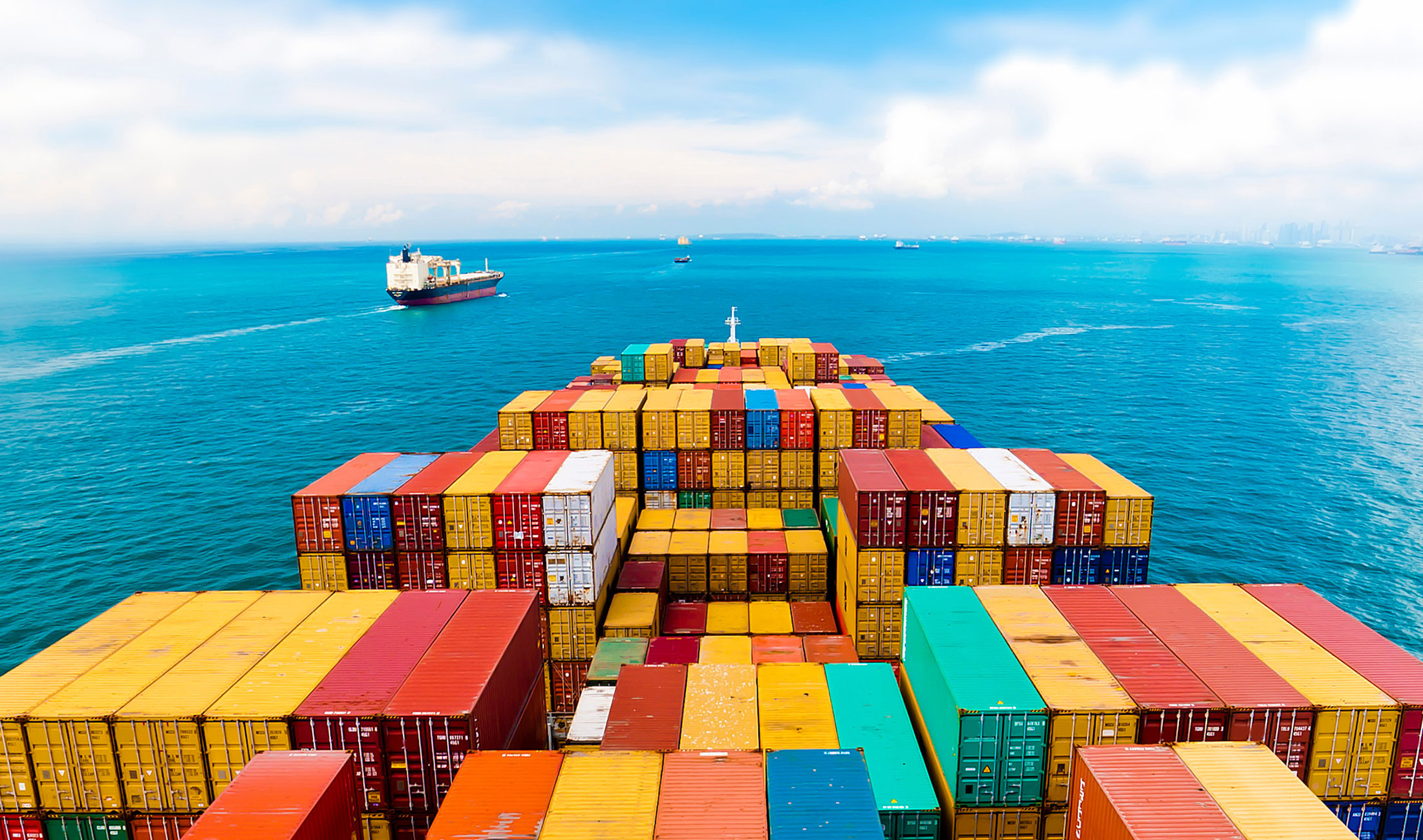
Published
- Financing
- Risk
- Trade
Is blended finance the key to attracting capital for large projects?
The international export community is seeking to build a “coalition of the competent” to spread the message that multi-institutional financing can help make large infrastructure projects bankable.
Turning blended finance from buzzword to reality
Trade professionals from banks, corporates and government institutions gathered at Stockholm’s Museum of Contemporary Art on 4 September for an EKN event entitled “Blended Finance – Bridging Capital & Social Impact”. Funding megaprojects in infrastructure and clean energy has become something of an art form in a time of volatile trade politics, risk-averse investors and aid-weary electorates.
Lena Bertilsson, Director Business Area Large Corporates at EKN, opened the event by noting: “Everyone’s talking about blended finance these days.”
But what do we really mean by blended finance? According to the OECD, it aims to encourage private investment in low- and middle-income countries by leveraging official development funds.
It’s fundamentally difficult to get mainstream investors to ‘go south’.
Christopher Marks
“The level of private finance being mobilised by various forms of development funding and guarantees has increased – but it is still insufficient to meet the strategic needs of many developing countries,” Bertilsson continued.
Long payoff times reduce bankability
Christopher Marks, Head of Growth Markets at Japan’s largest bank MUFG (Mitsubishi UFJ Financial Group) explained that the bank is working to develop the tools and expertise needed to operate in new markets. “Infrastructure projects are usually very large and important to sustainable economic development, but they have long payoff times. There is consequently a lack of bankable projects and a need for risk mitigation to attract private capital.”
Financing of very large projects is difficult, partly because there is no payback during the construction period, which requires risk mitigation and different kinds of institutions.
Magnus Callavik
The sheer scale of such projects often necessitates multi-institutional backing. One example is MUFG’s leading role in financing of EUR 2.6 billion, including an EKN-backed facility, for a new electrified railway in Türkiye (Turkey). The complex structure involved five ECAs, one development fund, over ten institutional investors and eight Swedish suppliers. “Blended finance in its true sense,” noted Bertilsson.
“Türkiye is a complicated jurisdiction to do business in, and as such subject to a need for risk protection,” Marks added. “It’s fundamentally difficult to get mainstream investors to ‘go south’. There is a recurring discussion in the world of development finance, that we need the trillions to close the financing gap.”
Stretching funding capacity
The scale of the financing gap demands new types of institutional involvement – but such players need reassurance. “It is beyond their mandate from pension funds and others to fund a 26-year project like the Turkish railway. To come on board, the package of protection that allows them to do that has to be transparent and sturdy enough. That’s why we need the participation of multiple ECAs. Pension funds don’t go to Türkiye without the proper balance between risk and reward.”
So how can we stretch funding capacity and make it acceptable for large investors to enter markets where they have no natural mandate? Strong partnerships is one solution.
We can apply the strength of working together in other large projects.
Tora Leifland
“We need to create a package that is coherent and transparent, as well as good for borrowers and citizens, which takes flexibility and innovation to understand and communicate the overall goals of everyone involved.”
The answer, according to a unanimous panel consisting of representatives from EKN, MUFG, Hitachi Energy, Volvo Construction Equipment and NIR (The International Council of Swedish Industry), is clear: To build a coalition of the competent – and the willing.
This coalition also includes regional development funds and bilateral development agencies. As for multilaterals, such as the World Bank, Marks noted that they “tend to stick with their proven business models and cannot hope to raise any more capital from shareholders who don’t want them to be ‘too adventurous’, nor can they take on more risk and ask taxpayers for new funding.”
According to Marks, willingness to fund large-scale development projects is weakening in parts of society. This makes it even more important for the trade finance community to pool their resources and develop structures that attract new investors. “Given the scarcity of money we have to optimize across the toolkit available to us. We need to bridge the gaps and make blended finance a reality for institutional investors need to come in.”
Only ten percent of infrastructural projects in the pipeline reach financial closure.
Christine Bäckström
He also welcomed the trend of combining trade with aid to leverage impact: “Appeal to enlightened and intelligent self-interest, which is what tied aid is all about.”
Facilitating the energy transition
The rapid transition to renewable energy required to reach the net zero goals is evident at Sweden-based Hitachi Energy, the leading global provider of HVDC technology for connecting grids with renewable energy. Magnus Callavik, Global Head of HVDC Engineering, reported that the surge in transitional investments has left Hitachi with an order book sufficient for seven years. “Financing of very large projects is difficult,” he conceded, “partly because there is no payback during the construction period, which requires risk mitigation and different kinds of institutions.”
Tora Leifland, Head of Public Affairs at Volvo Construction Equipment, added: “We can apply the strength of working together in other large projects. Mining and infrastructure are challenges in different types of markets, given environmental and social risks involved.”
On the question of how to attract new investors to export finance, Christine Bäckström, CEO at NIR, emphasized the importance of blended finance “You need to slice the risk to make it more edible to investors”.
The lack of infrastructure is a serious development barrier in many regions, nowhere more so than in sub-Saharan Africa, where it impedes interregional trade. “Only ten percent of infrastructural projects in the pipeline reach financial closure. Large infrastructure projects in sub-Saharan Africa are extremely difficult to carry out, due to a lack of financial, legal, sustainability and technical capacity. The objective of NIR is to help upskill and develop these strengths among the local project owners.”
A new Director General’s reflections
Before the panel discussion, Åke Nordlander, recently appointed Director General of EKN, took the opportunity to reflect on the event: “This is where experience comes together to build Swedish competitiveness, support the energy transition and contribute to international development.”
Nordlander, a former board member of EKN, also brings experience from the Ministry of Finance. The government recently tasked EKN with establishing a financial instrument incorporating a soft loan component to enable Swedish companies to support developing countries. “To make use of this we need to cooperate closely with corporations and banks and the other members of Team Sweden. Swedish expertise can make a real difference on a global scale.”
As for his hectic first four days in office, Nordlander joked that “it sometimes felt like being inside a washing machine.”
Further insights on export finance and global investment

- Bank
- Financing
- Guarantees
New extended risk cover unlocks faster payments in export deals
EKN’s extended cover lets banks discount export invoices risk-free – an unconditional, on-demand guarantee for exporters.
New extended risk cover unlocks faster payments in export deals
- Financing
- Risk
- Trade
Reinsurance agreement bolsters export finance
A bilateral reinsurance agreement promises more attractive financing for large projects with sourcing from both Sweden and the US.
Reinsurance agreement bolsters export finance
EKN for buyers in Swedish export transactions
Buy from Sweden and benefit from attractive financing.
EKN for buyers in Swedish export transactions

EKN for large corporates
More and bigger export transactions for companies with an annual turnover of more than SEK five billion.
EKN for large corporates